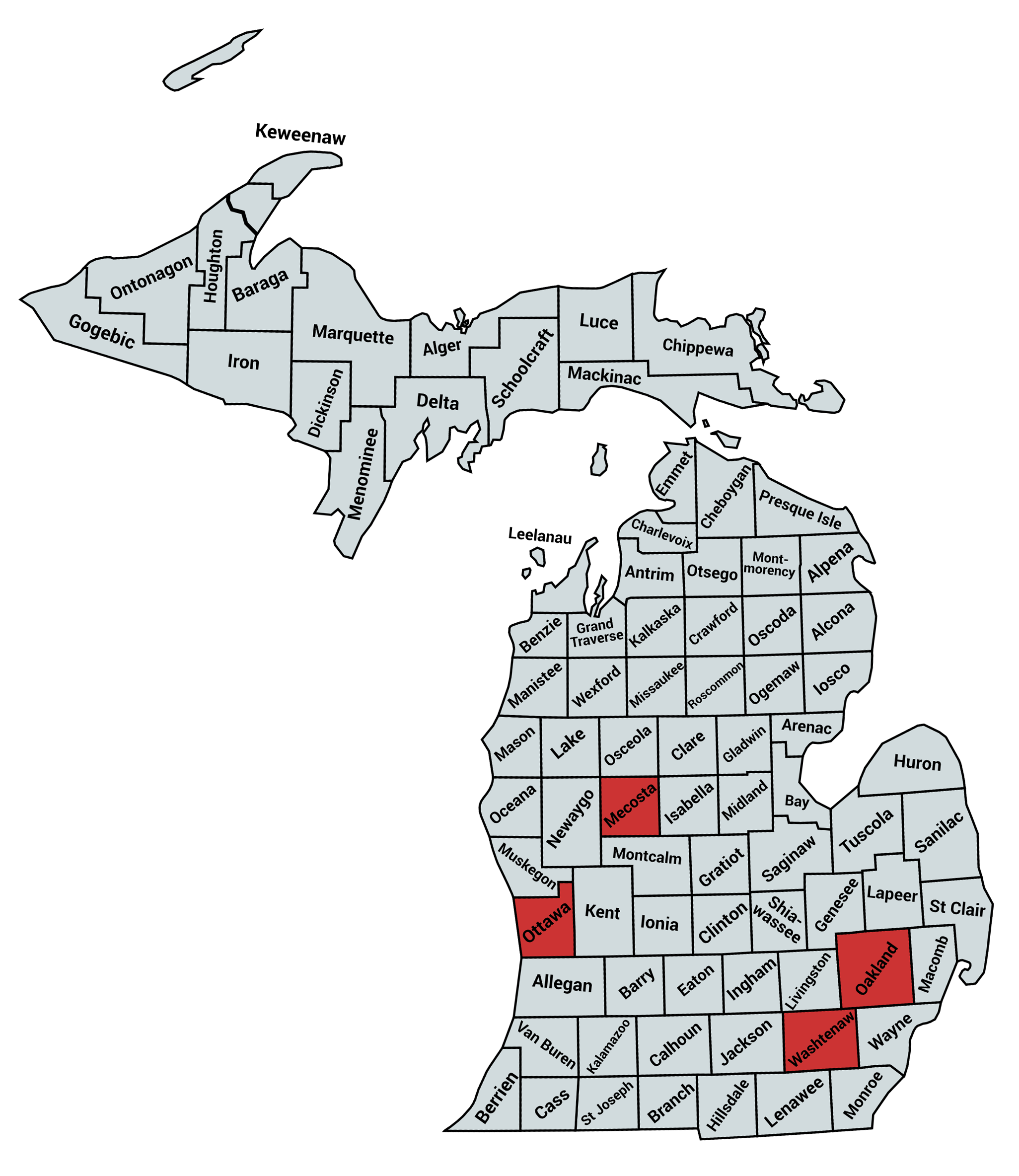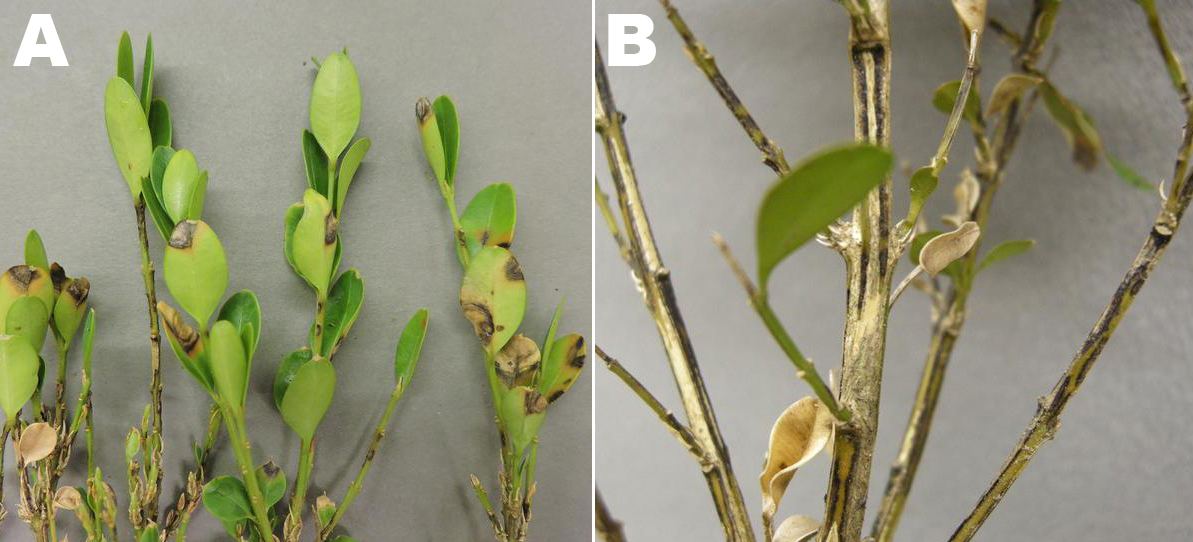Preventing the spread of boxwood blight in landscapes
Landscapers and home gardeners should be on the lookout for boxwood blight in gardens and work to prevent its spread.

The Michigan Department of Agriculture and Rural Development (MDARD) first reported boxwood blight in Michigan in 2018. As of September 2019, it has been detected in four counties in Michigan (Figure 1). Michigan is the 29th state to report boxwood blight in the U.S., and this disease is now present across the vast majority of the eastern half of the United States (Figure 2).
According to MDARD, boxwood blight was detected again during the spring sales season in 2019. It was initially found on container-grown plants at large retailers (box stores) in Ottawa, Mecosta and Oakland counties. The infected plants from an out-of-state supplier were distributed to stores all over the state. Unfortunately, many boxwood plants had already been sold and its presence here in Michigan is likely to spread. Therefore, landscapers and home gardeners need to learn about the symptom’s characteristic of boxwood blight infection and how to prevent its spread and what to do if boxwood blight is suspected.


Symptoms
Boxwood blight, Calonectria pseudonaviculata (old names Cylindrocladium pseudonaviculatum and C. buxicola), is a fungal pathogen of species in the plant family Buxaceae, which includes the popular boxwood, sweetbox and Pachysandra spp. In boxwood, often the first symptom noticed is a large amount of rapid defoliation (leaf drop), which is indicative of a severe infection. Generally, part of the plant will become chlorotic or brown, and leaves will rapidly fall to the ground, leaving bare branches behind.
Initial symptoms are generally first observed in late spring or early summer when close examination of boxwood leaves may reveal round, dark or light brown leaf spots with darker borders and potentially a yellow halo (Photo 1A). These spots eventually grow larger and coalesce, before turning brown or straw-like and dropping to the ground. Black, elongated, streaking lesions may also be visible on the stem (Photo 1B). These can occur on the stem from the soil line to the shoot tips. If the weather is humid, the underside of the leaf will have a white, frosty appearance caused by the formation of upright bundles of fungal spores.

One challenge with boxwood blight is that there are a number of other problems that also cause the browning of leaves and defoliation of boxwood, including salt damage, winter injury, boxwood leaf miner, drought stress and the fungal pathogen, Voluntella. For more information on look-alike boxwood problems, read “Browning of boxwood: Is it boxwood blight?”
Sanitation
Newly purchased plants should be located away from any other susceptible plant species for at least a month; this is enough time for disease symptoms to show up if plants are infected. If this is not possible, gardeners or landscapers should be extra vigilant in looking for boxwood blight symptoms such as defoliation and brown lesions on newly purchased and nearby susceptible species.
Landscapers installing multiple landscapes with susceptible plants will need to be particularly vigilant in removing plant debris and sanitation of their pruning tools. Tools should be disinfected in solutions including 70% alcohol for 5 to 10 minutes, hydrogen peroxide for 10 minutes, or in bleach (sodium hypochlorite) for 5 minutes. For a full list of products for sanitizing tools, hard surfaces or pots, refer to “Products for Sanitizing Tools, Equipment, and Hard Surfaces for Managing Boxwood Blight” by S.M. Douglas at the Connecticut Agricultural Experiment Station.
All diseased plants should be double bagged in plastic trash bags and thrown out. To learn more about the disease, download a boxwood blight fact sheet published by MSU Extension.
To learn more information about preventing boxwood blight in commercial nurseries, check out, “Preventing boxwood blight in nurseries.”



 Print
Print Email
Email

